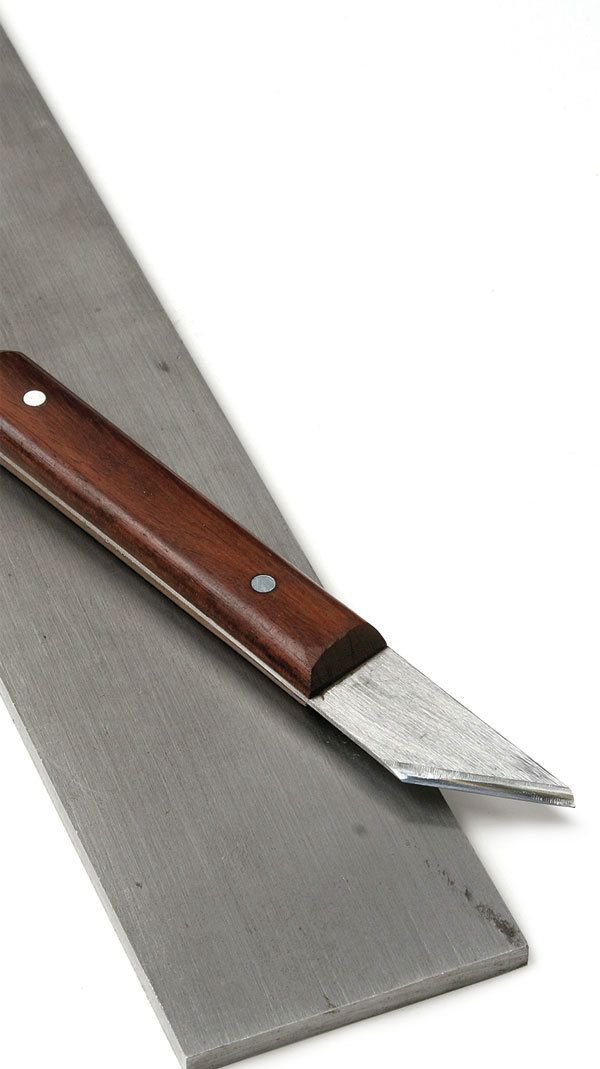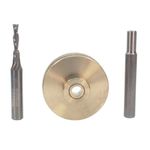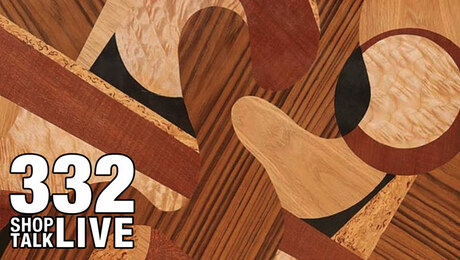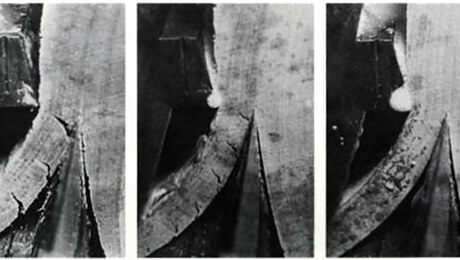
Q:
I would like to try veneering, but I’m put off by how difficult cutting veneer seems to be. Most articles describe techniques that involve special veneer saws, jigs, and fixtures. Must it be that complicated?
George Wilson, Brookyln, NY
A:
Absolutely not. In fact, the process is simple.
First, you need a fence. I use a machinist’s straightedge (Starrett makes one; it’s sold by GarrettWade, www.garrettwade.com), but any flat and straight length of steel will do, if it’s heavy enough to hold the veneer down flat for the cut.
Clamp the straightedge ends to the table, making sure that the veneer extends under both clamps (so the straightedge won’t bow up in the middle). If a clamp can’t reach the middle of the straightedge, hold that section down with a heavy weight.
The knife must be beveled on one side only, giving you a flat side to ride against the fence. This produces a square edge on the veneer that will butt tightly against the square edge of the adjacent piece. (One source for single-bevel knives is www.rockler.com.)
To begin, place the fence over the veneer so that the waste side is exposed. Make a shallow scoring cut along the entire length of the veneer, going “down” the grain–that is, in the direction that takes the grain toward the fence. This might require switching hands, but it will force the knife against the fence during the cut.
Then, starting a few inches from the exit end of the score, make a through-cut down to the exit end. Work your way up through the rest of the cut the same way. This lessens the chance of splitting the veneer if the knife snags a tough spot.
 |
| Finish the cut in stages. Starting a few inches from the back end of the score, push the knife through the veneer (above). Then cut through in a series of short cuts, working up to the front. |
To crosscut the veneer, start by establishing one straight edge along the grain. Now, using a square, make a scoring cut across the width of the veneer.
Next, as before, work back toward the beginning of the score. However, because you’re cutting across the grain, you need to start delicately. Place the edge of the knife into the last 1/4 in. of the score, and with a rocking, paring motion, cut down through the veneer. With the exit end severed, you can make the rest of the cuts without fear of tearout.
Photos: Staff
Fine Woodworking Recommended Products

Whiteside 9500 Solid Brass Router Inlay Router Bit Set

Bahco 6-Inch Card Scraper

























Comments
grafting knives are single edge and usually high quality.
Log in or create an account to post a comment.
Sign up Log in